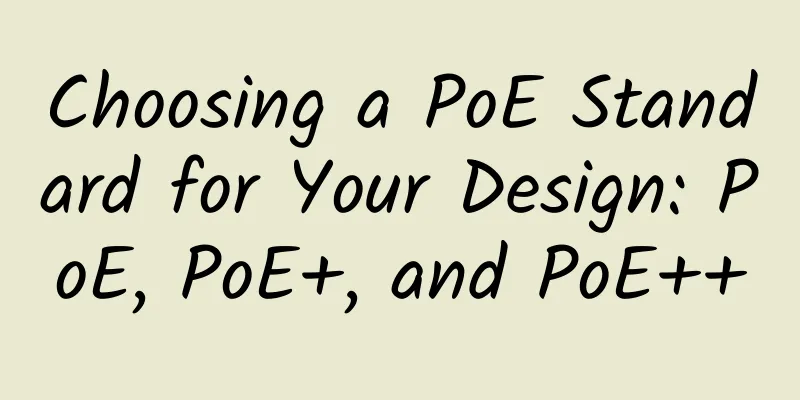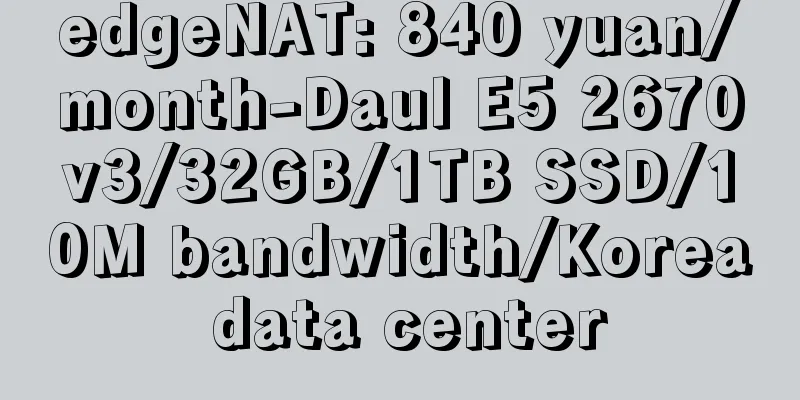Choosing a PoE Standard for Your Design: PoE, PoE+, and PoE++

|
Power over Ethernet standards have important differences that designers need to consider when unifying power and connectivity. In an age where more and more designs require internet connectivity, designers can save space by leveraging dual-purpose standards such as Power over Ethernet. This standard (and others like it) minimizes the number of ports required to operate a device. Rather than requiring multiple ports to provide power, communication, and debug capabilities, a single port can be used to simplify the design and characterization process while keeping the form factor small. PoE utilizes two or four twisted pairs in Ethernet cables to transmit power without sacrificing communication capacity. Image courtesy of FS While Ethernet is not the only way to connect to a local network, it provides a physical wired connection rather than a wireless connection that requires a router to operate. Therefore, for systems that require close to 100% up time, Ethernet may be the most reliable method. Certain designs can take advantage of the well-developed Power over Ethernet standard (PoE), eliminating the need to use both a power supply and an Ethernet port. There are now three generations of PoE standards, each providing unique advantages to designers. This article describes the salient features of these PoE standards, providing designers with the knowledge they need to combine power and communications in their devices. PoE combines communication and power into one portA PoE cable contains 4 twisted pairs, for a total of 8 pairs. Both PoE (IEEE 802.3af) and PoE+ (802.3at) use two pairs for data and two pairs for power. PoE++ (IEEE 802.3bt) utilizes all four twisted pairs to provide both data and power, allowing them to deliver power at higher wattages. The first generation of the PoE standard, or PoE, can provide up to 12.95 W of power to devices in the 37-57 V range. When it was released (2013), the standard gave designers some room for low-power designs, but it was quickly upgraded to the PoE+ standard to provide more power. Inside a PoE cable. Image courtesy of Nelly's SecurityThe PoE+ standard provides up to 25.5 W of power to devices at 42.5–57 V. The latest version of the PoE standard, called PoE++, significantly increases power consumption, enabling designers to use up to 71 W of power for connected devices at the same voltage level. Engineers can incorporate PoE into more power-hungry designs, providing more versatility for Ethernet systems. PoE exploits the variability of Ethernet cables to allow power and communications signals to coexist, providing power without sacrificing communications bandwidth. Image courtesy of Versa Technology It's also worth mentioning that PoE does not affect transmission speed (at least in theory). Since Ethernet uses differential pairs for data transmission, the common-mode voltage of the twisted pair can be increased with little impact on communication capabilities. Selecting a PoE StandardWhen choosing which PoE standard to incorporate as part of a design, the differences between the standards make the choice simple: select a standard that provides enough power for the device. For example, if low power consumption is desired, PoE will be sufficient, while a higher power design may need to utilize PoE+ or PoE++. By utilizing more twisted pairs, the PoE standard has evolved to provide designers with more power capacity and PoE support in high-power devices. Image courtesy of Versitron This is certainly not the only factor to consider when choosing a standard; communications bandwidth can also determine which IEEE standard (and thus the PoE standard) should be used. However, if power availability is the only consideration, the simple evolution of the PoE standard makes the choice very intuitive. Simplify interconnect designWhile PoE may not be a one-size-fits-all solution, for use cases that require high-quality or noise-free power, PoE is a useful option that provides simplified connectivity. PoE uses only one port for connection and power, simplifying the setup process and ongoing operations. As the number of connected devices continues to grow, PoE standards will likely continue to evolve to meet demand. However, for less critical devices, balancing reliable wired and wireless connections may provide the best compromise for the future of networking technology. |
>>: Different Types of Network Cables and Their Uses
Recommend
WiFi is indispensable for taking a break. You can learn how to solve the signal coverage problem
We are about to bid farewell to 2016 and welcome ...
Before becoming a "hacker", you must master the "network protocol port"
In the previous article, we gave a detailed descr...
Thoroughly understand Session and Token
Hello everyone, I am amazing. When building a use...
10gbiz 40% off on all VPS hosts, Hong Kong CN2 GIA/Los Angeles CN2 GIA lines available
10gbiz's promotion is still going on, with 40...
iWebFusion: Los Angeles 4G memory package starts at $9.38/month, and you can upgrade to 10Gbps bandwidth for $5 more
iWebFusion's VPS price may not seem cheap, bu...
The three major operators released their operating data for December
China Telecom's mobile user base increased by...
Common ways to manage networks through AIOps
NetOps teams in enterprises are faced with the ch...
Tudcloud: Hong Kong VPS with 20% off for monthly payment and 30% off for half-year payment, with options of large bandwidth or unlimited traffic
Tudcloud has released a year-end discount, offeri...
Single-mode fiber: What's next?
As the demand for high-speed, reliable networks c...
A seminar on hypertension prevention and control was held, and Omron helped China to upgrade its hypertension management to a smart level
On December 5, 2019, the "To the Classic, Cr...
Why IoT needs machine learning to thrive
There has been a lot of discussion about the oppo...
4 major roles of the network in enterprise digital transformation
Currently, digital transformation is described as...
Internet services for the elderly have been standardized
In order to help key groups such as the elderly a...
Wi-Fi 7 domestic standard is about to be implemented! The Ministry of Industry and Information Technology solicits opinions on equipment approval, and the measured network speed reaches 4.3Gbps
On June 2, it was reported that the technical sta...
Four challenges in securing multi-cloud networks
Today's organizations are not only actively m...









